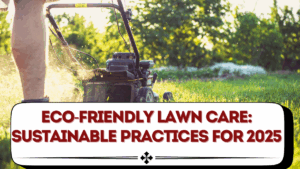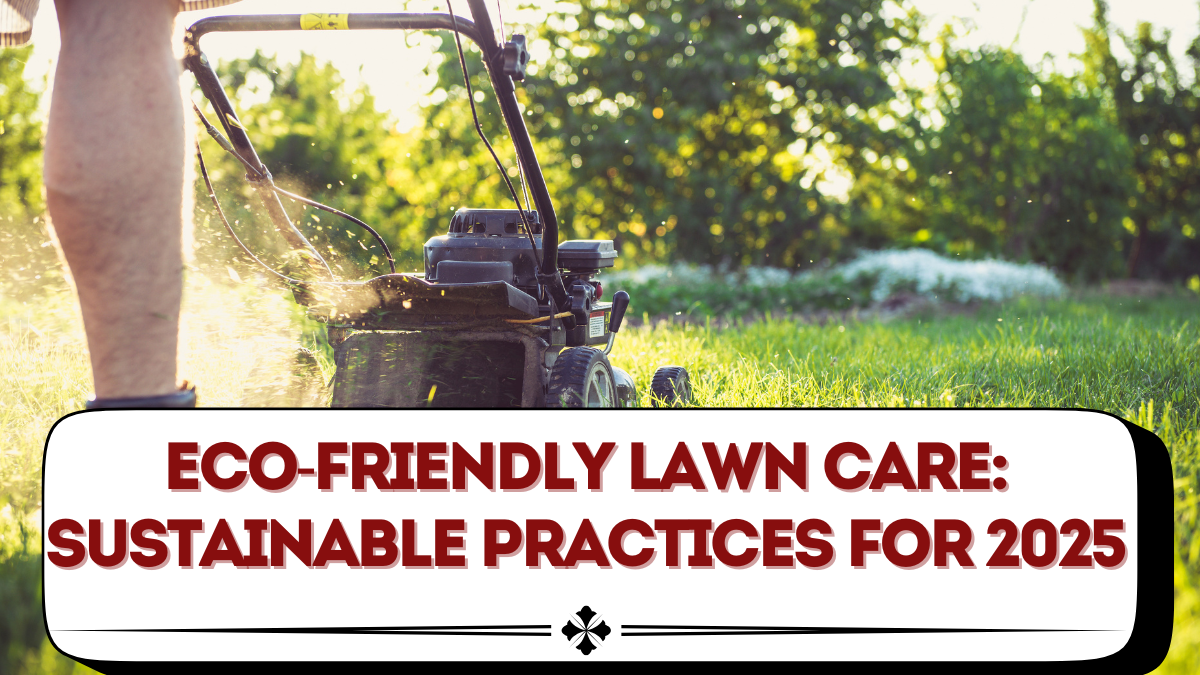The growing awareness of climate change and environmental responsibility is reshaping the way homeowners approach lawn maintenance. In 2025, eco-friendly lawn care is no longer just a trend—it’s a necessity. With water shortages, soil degradation, and rising demand for chemical-free living, people are turning toward sustainable methods to maintain green, healthy lawns without harming the environment.
This article explores practical, eco-conscious ways to care for your lawn, including organic fertilizers, water-saving irrigation systems, and sustainable landscaping choices.

Why Eco-Friendly Lawn Care Matters in 2025
Traditional lawn care often relies on heavy chemical fertilizers, pesticides, and excessive water use. While these methods may deliver short-term results, they contribute to pollution, soil imbalance, and long-term ecosystem damage.
Key reasons to adopt eco-friendly lawn care:
-
Reduces chemical pollution in soil and waterways.
-
Conserves water in drought-prone areas.
-
Promotes biodiversity by supporting pollinators.
-
Improves long-term soil health and resilience.
-
Creates a healthier environment for families and pets.
Core Sustainable Lawn Practices
1. Organic Fertilizers
Instead of synthetic chemicals, organic options like compost, manure, and plant-based fertilizers enrich the soil naturally.
2. Smart Irrigation
Install weather-based sprinklers and drip irrigation systems to minimize water waste.
3. Clover and Wildflower Lawns
Replacing traditional grass with clover or wildflowers reduces mowing, watering, and chemical needs.
4. Natural Pest Control
Use beneficial insects like ladybugs or eco-friendly sprays instead of harsh pesticides.
5. Mulching
Leave grass clippings on the lawn to recycle nutrients and reduce fertilizer needs.
Eco-Friendly Lawn Alternatives
| Option | Benefits | Maintenance Level | Eco Impact |
|---|---|---|---|
| Clover Lawns | Drought-resistant, pollinator-friendly | Low | Very High Positive |
| Native Grass Mix | Adapted to local climate | Medium | High Positive |
| Wildflower Lawns | Attracts bees, butterflies | Low | Very High Positive |
| Artificial Turf | No watering or mowing | Low | Neutral to Negative (plastic use) |
This table shows that clover and wildflower lawns are among the most eco-friendly options in 2025.
Tools for Sustainable Lawn Care
-
Electric Mowers – Reduce carbon emissions compared to gas-powered models.
-
Robotic Mowers – Save energy and maintain consistent grass height.
-
Soil Testing Kits – Help identify deficiencies and prevent over-fertilization.
-
Compost Bins – Recycle food waste into natural fertilizer.
Eco-Friendly Fertilization Schedule
-
Spring – Apply compost or slow-release organic fertilizer.
-
Summer – Use liquid compost tea or seaweed extract for heat stress.
-
Fall – Enrich soil with compost to prepare for winter.
-
Winter – Limit treatments, let the lawn rest.
Benefits of Eco-Friendly Lawn Care
-
Lower Costs – Reduces dependency on chemical products.
-
Healthier Grass – Stronger roots and resilience against pests.
-
Saves Time – Less mowing and watering required.
-
Supports Wildlife – Pollinator-friendly lawns help ecosystems thrive.
Tips for Transitioning to Eco-Friendly Lawns
-
Start by reducing chemical fertilizer use gradually.
-
Replace a section of your lawn with clover to test sustainability.
-
Invest in smart irrigation to optimize water usage.
-
Use hand tools or electric trimmers to lower emissions.
-
Encourage neighbors to adopt eco-friendly lawn care for greater impact.
FAQs
What is the best eco-friendly alternative to grass lawns?
Clover lawns are the most popular in 2025 due to their drought resistance and low maintenance.
Do eco-friendly lawns cost more?
Not necessarily. While some tools like smart sprinklers may have higher upfront costs, overall maintenance is cheaper long term.
Can I stop using chemicals completely?
Yes, organic compost, natural pest control, and proper mowing practices can eliminate the need for harsh chemicals.
Are robotic mowers eco-friendly?
Yes, especially solar-powered models, as they use less energy and produce no emissions compared to gas mowers.
How long does it take to transition to a sustainable lawn?
Most homeowners notice improvements within one growing season, though full ecosystem balance can take 2–3 years.
Conclusion
In 2025, eco-friendly lawn care is more than just good practice—it’s the future of gardening. By adopting sustainable methods such as organic fertilizers, smart irrigation, and low-maintenance alternatives like clover lawns, homeowners can achieve lush, green yards while protecting the environment. With the right balance of technology and natural solutions, eco-conscious lawn care ensures beauty, resilience, and sustainability for years to come.
Click here to know more.
